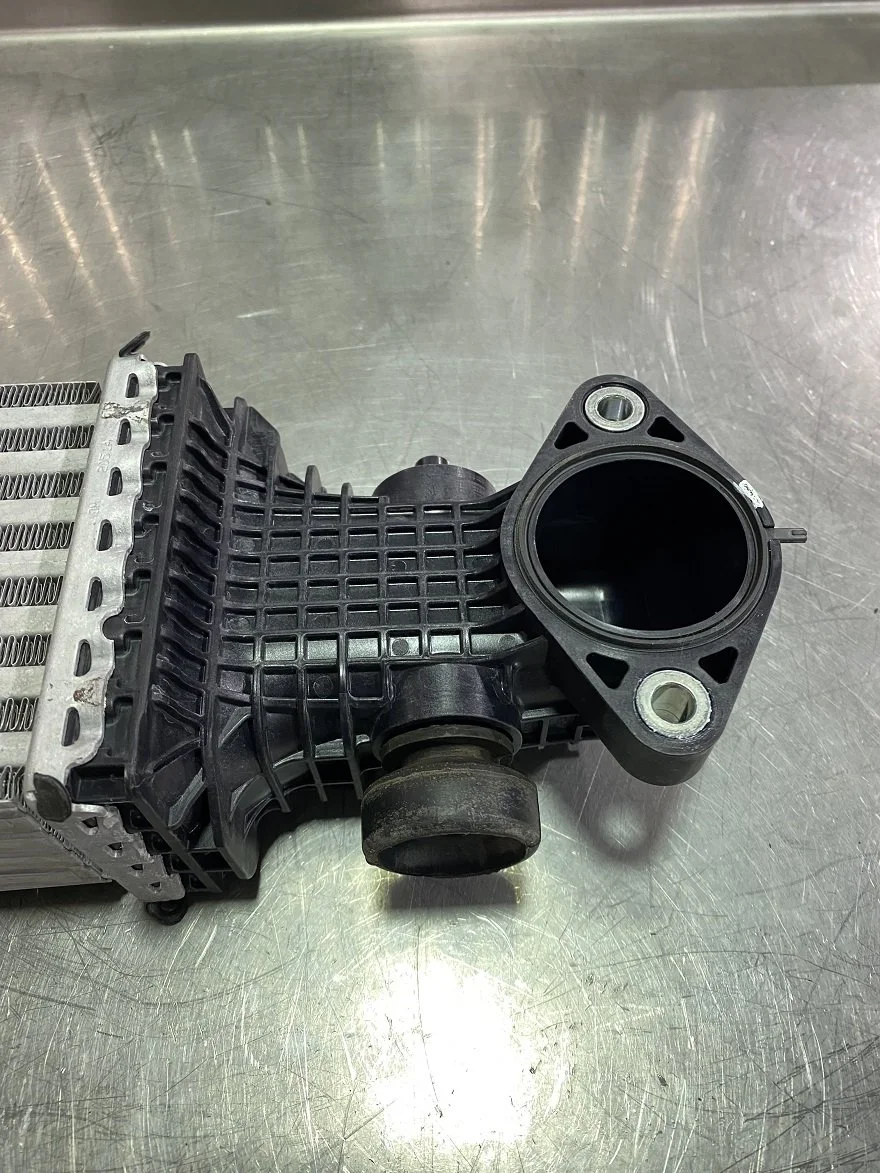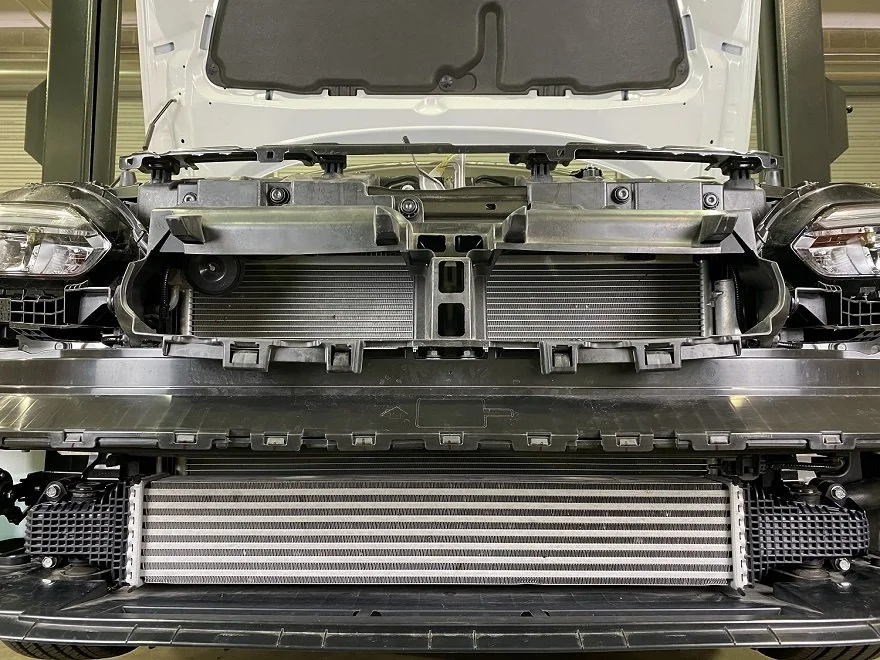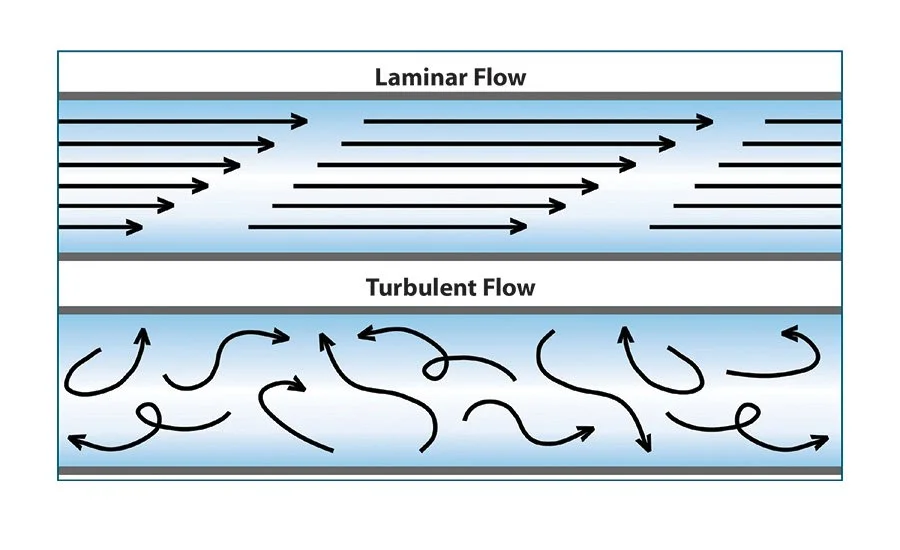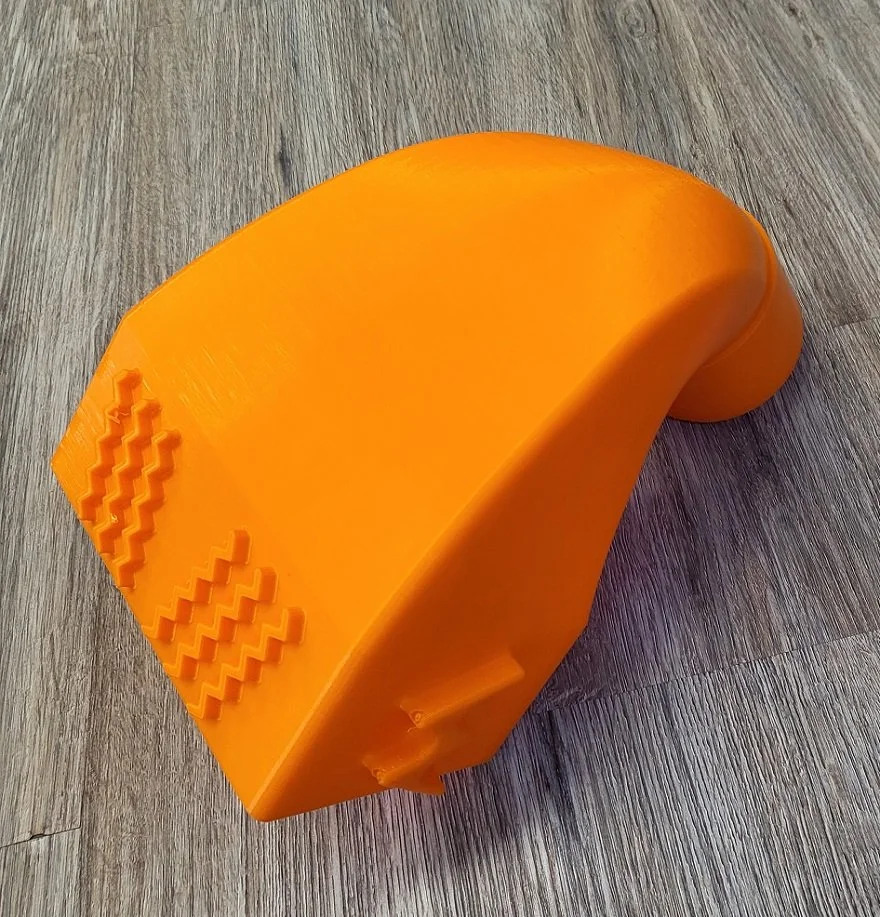11th Gen FMIC - Extracting Even More Power From End Tank Design - Design Blog Pt. 3
Welcome to part 3 of our design blog series for the 2022+ Honda Civic and 2023+ Acura Integra Front Mount Intercooler System (FMIC).
In our last blog, we dove into our FMIC “end tank” design to tell you how we were going to optimize these details. Even further back in our first blog, we explored the OE system to better understand where the overall improvement opportunities were.
Now, in this blog release (#3) you might think we’d move on to the intercooler core itself or the piping, but no! We have much more to say about the end tanks!
We have another awesome design feature that we are incorporating into our 27WON FMIC upgrade that we are ready to share with you guys. This is personally my favorite feature of our intercooler design and one that I’m certain you won’t find on any other 11th-gen Civic or 5th-gen Integra FMIC out there.
As stated in our earlier blogs, temperature is a big factor in an intercooler. More specifically, we want our intercooler to reject as much heat as it can. In order to do that, we put it right in front of the car behind a big open grill so that the passing air going through the core can pull heat away from the charge air in the system. The most optimized intercooler would have an outlet(exit) temperature that is identical to the ambient(outside) air. This is a hard goal to achieve for multiple reasons, but what if there were some steps we could take to design our intercooler to get as close as possible to this scenario?
Okay, so let's nerd out real quick. Briefly speaking, there are two categories of heat transfer enhancement techniques, active and passive.
Active heat transfer enhancement techniques are quicker and more powerful, but it costs extra energy. A good example of an active heat transfer improvement technique is the radiator in your car. The water pump connected to your Civics drive belt is driven by some of the work your engine generates and that is the cost of cooling the engine. All active heat transfer enhancement methods require the consumption of extra energy. There is a trade-off here. We have to be really smart about adding more active heat transfer to the car if the goal is to get more power out of the engine. On the other hand, passive heat transfer enhancement techniques don't require extra work via an engine or other drive-train component and therefore have no power penalties. We like this!
We took some time to research passive concepts and zeroed in on the optimal techniques we would apply after testing countless combinations.
It’s obvious we already have two big end tanks on each side of the intercooler with large surface areas. Now, if there are going to be end tanks, why not put them to work on lowering temps? After much refining, several passive techniques made the final cut!
First, a better cooling effect was accomplished by simply introducing more turbulence inside the end tanks. Common sense dictates that laminar flow is preferred in cooling systems. The truth is, almost every heat transfer application involves turbulent flow. Heat transfer in the laminar regime (the smooth airflow part) is carried out by molecular diffusion primarily. Unlike the laminar regime, turbulent flow consists of a lot of eddies and these eddies can transport mass, momentum, and energy much more efficiently than molecular diffusion from the laminar regime.
Image Credit: https://bit.ly/3BiW5rh
A rule of thumb in heat transfer models is that the heat transfer coefficient increases with the Reynolds number. With a typical airflow speed of 130C inside the intake air duct for a turbocharged car at 1.6m/s, we get a Reynolds number of 1 x 105. This indicates that almost all cars have air inside the intake system within the turbulence regime. In order to improve heat transfer further, more eddies need to be brought in. In this way, the airfoils we introduced back in blog #2 were not just acting as deflectors, but also vortex(turbulence) generators. The specific angle of attack we picked for the airfoil induces separation of flow that leads to more eddies and better heat transfer. According to our simulation results, the final design of our inlet end tank design brought the air temp down 10C before it entered the intercooler core. This means you just gained horsepower as cooler air, means denser air and more power potential. This might sound like a small difference, but it’s free horsepower we are talking about so why not.
As for another passive heat transfer improvement, let’s talk about the external side of this newly designed end tank.
This is my favorite new feature I mentioned earlier!
A smooth round end tank surface will convect *some* heat and reject it into the atmosphere. But what if we took that big blank end tank canvas and made it reject even more heat to make things even cooler? HEAT SINK!
What you see above is not our final heat sink design, but will give you an idea of the direction we are headed. The pictures down below show the effect of cooling on a smooth external surface and a heat sink stacked surface. Most of the heat transfer occurs at the edges. Same as the velocity contour, red means high, and blue means low. For a smooth end tank, most of the end tank external surfaces are blue which indicates there is no heat being taken out. Such a waste! Based on Newton's law of cooling, the convective cooling effect is proportional to the surface area. In this fashion, we introduced a passive heat transfer improvement technique you have not seen from any other aftermarket intercooler. A total of 6 zig-zag patterns were added to the front surface in this prototype. This small feature doubled the heat transfer coefficient. You can see from the simulation below that the color around these patterns is orangish-red indicating a high heat transfer rate which means they take more heat out of the end tank. By adding these patterns, the temperature on the end tank was brought down 5C! Not to mention there is another end tank on the outlet side of the intercooler and all these simulations were conducted with worst-case scenarios. A good estimation would be that by introducing all these features to just the end tanks, you might get 3 to 5 free horsepower!
I’ll just go ahead and say it now, you aren’t going to find a more thoughtfully designed and crafted intercooler for the 11th generation Honda Civic or the new Acura Integra.
This kit is going to have several new features including some of the ones we’ve just mentioned and will outperform just about everything out there, period. And mind you, we’ve only talked about the end tanks so far. We have a lot more to say about this kit. After hours of study, sims, and computer-aided design, we are very close to functional prototypes to test on the track.
In our next update, we’ll talk about core selection and share a few more passive heat transfer features. We look forward to sharing more details about this innovative cutting-edge intercooler in the future so stay tuned!
-Vincent






